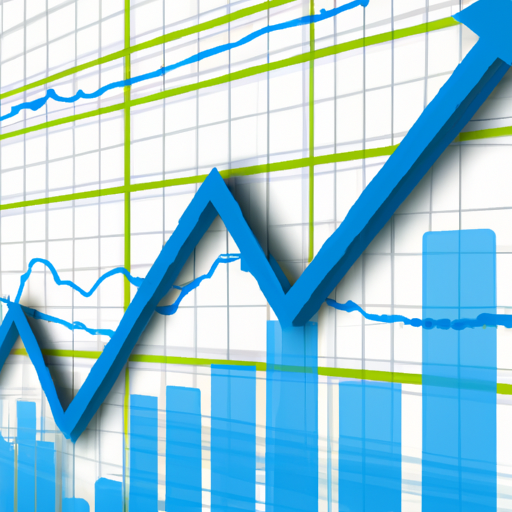
Ready to turbo-charge your trading skills? You’re in the right place! Today we’re going to explore a handy tool called ‘Moving Averages’ and how it can enhance your decision-making in trading. From minimizing risk to maximizing profits, you’re about to discover a whole new layer of savvy trading techniques! Prepare yourself for a more strategic and confident trading future. Are you excited for what’s next? Let’s go!
Understanding Moving Averages
When it comes to technical analysis in trading, moving averages are fundamental tools. They can help analyze past data patterns and enable you in making a calculated prediction about future market direction. So let’s dig deeper and understand them.
Definition of moving averages
Moving averages, as the name suggests, are averages of previous prices over a set period of time that move with new data points being included as old ones drop off. They are calculated by adding the closing prices over a specific number of periods and dividing the sum by the number of periods considered.
Types of moving averages: Simple & Exponential
There are basically two types of moving averages which you will come across most commonly when trading. These are Simple Moving Average (SMA) and Exponential Moving Average (EMA). SMA gives equal weight to all data points, whereas EMA gives more weight to recent data points.
The concept and calculation behind moving averages
The primary concept behind a moving average is simply smoothing out price data to help identify the market trend. The calculation differs between simple and exponential moving averages. For instance, for SMA, you only need to sum up the data points and then divide this sum by the number of data points. EMA calculation, however, is a bit complex as it applies more weight to the most recent prices.
Importance of Moving Averages in Trading
Next, let’s talk about the significance of these moving averages in your trading journey.
Role in identifying market trends
Moving averages can help you discern the direction of a current trend in the market. When the price is above the moving average, it may suggest an uptrend, and when the price is below the moving average, it may suggest a downtrend.
Significance in setting stop loss and take profit levels
Moving averages can also help in setting stop loss and take profit levels. Many traders use moving averages as support and resistance levels, where they place their stop loss and take profit orders.
Use in predicting future price movements
Though moving averages are inherently lagging indicators, they can still help in predicting future price movements. When a short period moving average crosses a longer one in an upward direction, it might suggest a bullish trend. Similarly, a downward cross might suggest a bearish trend.
Utilizing Simple Moving Averages (SMA)
SMA is arguably the first moving average that a newbie trader gets acquainted with.
Explanation of how a simple moving average is calculated
A Simple Moving Average is calculated by summing up the closing prices over a specific number of periods and dividing the sum by the number of periods. In simple terms, an SMA is the average price over a certain number of time periods.
Use of SMA in trend identification
Most traders use SMA to identify market trends, particularly medium-to-long-term trends. For example, if a 200-day SMA of a stock is going up and the stock’s price is above this SMA, the trend is usually considered bullish.
Examples of trading strategy using SMA
A common trading strategy is to buy when the price crosses above its SMA and sell when it crosses down below the SMA. Even though it’s a simple strategy, it is quite effective when used in trending markets.
Making Use of Exponential Moving Averages (EMA)
EMA is more responsive to recent price changes due to the extra weighting.
Understanding the EMA calculation
The EMA is calculated by assigning more weight to the recent price data, thereby making it more responsive to short-term price changes. The calculation involves multiplying the difference between the current price and the previous EMA by a smoothing factor and then adding this to the previous EMA.
How EMA differs from SMA
The key difference between EMA and SMA is the weight assigned to the most recent price data. SMA assigns equal weight to all the data points while EMA gives more weight to recent prices, making it more sensitive to price changes.
Examples of trading strategies with EMA
In an EMA-based trading strategy, a common approach is to buy when a short period EMA crosses above a longer one and sell when a short-term EMA crosses below a longer-term EMA. This approach is particularly effective in trending markets.
Execution of Moving Average Crossovers
Moving average crossovers are when the value of one MOV crosses above or below another, a common strategy favored by many traders.
Definition of moving average crossover
A moving average crossover occurs when a faster-moving average (like a 15-day moving average) crosses a slower moving average (like a 50-day moving average). An upward crossover signifies a bullish trend while a downward crossover signifies a bearish trend.
Importance of SMA and EMA crossovers in trading
Many traders employ the SMA and EMA crossover strategy due to its simplicity. The key thing about crossovers is that they often represent a change in the market trend offering a good opportunity to seize profitable trades.
Considerations when executing crossover strategies
When executing crossover strategies, you must consider both the type and length of the moving averages involved. Also, keep in mind that this strategy works best in trending markets and may produce many false signals in choppy or sideways markets.
Applying Moving Average Convergences and Divergences (MACD)
MACD is one of the most popular and reliable indicators used by traders. It involves the use of moving averages, but with a slight twist.
Explanation of MACD
The MACD is a trend-following momentum indicator that indicates the relationship between two moving averages of a security’s price. It is calculated by subtracting the 26-period EMA from the 12-period EMA resulting in the MACD line. A 9-day EMA called the “signal line,” is then plotted on top of the MACD line.
Why MACD is significant in trading
MACD is significant due to its ability to spot changes in the strength, direction, momentum, and duration of a trend in a stock’s price.
Ways to interpret and use MACD signals
MACD can provide several types of trading signals. For instance, when the MACD line crosses above the signal line, it provides a bullish signal, suggesting that it might be an appropriate time to buy.
Key Indicators to Combine with Moving Averages
To enhance the effectiveness of trading strategies involving moving averages, traders often pair them with other technical indicators.
Use of trend lines and moving averages
By combining trend lines with moving averages, you can refine your entries and exits.
Combining moving averages with Relative Strength Index (RSI)
RSI is a momentum oscillator which, when used with moving averages, can help identify potential price reversals.
Stochastic oscillator and moving averages pairing
This pairing serves as a good combination as they can provide traders with a more robust picture of the market’s current trend and signals for potential entries and exits.
Common Pitfalls of Using Moving Averages
While moving averages are quite popular among traders, they come with their own set of limitations that you should be mindful of.
False signals given by moving averages
Moving averages can sometimes send false signals, particularly in choppy or sideways markets.
Lagging nature of moving averages
Being a lagging indicator, moving averages may not be the best for predicting short-term price changes.
Unreliability during periods of low volatility
During periods of low volatility or sideways markets, moving averages may not provide accurate signals.
Backtesting Moving Averages Strategies
Backtesting your moving average strategies is crucial before implementing them in live trading.
Understanding the importance of backtesting
Backtesting enables you to evaluate the performance of your trading strategy using historical data which can give you more confidence in its performance futures.
Steps in backtesting moving average-based strategies
To backtest a strategy, you need to define your strategy rules, obtain historical data, implement these rules on this data, and then analyze the results.
Analysing backtest results
When analyzing the backtest results, it’s crucial to look not only at profitability but also at other metrics like drawdown, risk-to-reward ratio, etc.
Improving Trading Decisions with Moving Averages
Moving averages are effective tools to improve your trading decisions if used wisely.
Appropriate selection of SMA and EMA periods
The choice of the time period in SMA and EMA can hugely influence their effectiveness. Typically, shorter periods respond faster to price changes while longer periods can provide more reliable signals.
Knowing when to use which type of moving average
Knowing when to use SMA or EMA is key. In general, SMA is used when you are looking for simplicity whereas EMA is used when more relevance is to be given to recent data.
Understanding the limitations of moving averages
Finally, as with any other tool, it’s always crucial to understand that moving averages are not foolproof. They are just tools that can help in making more informed trading decisions.





